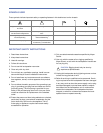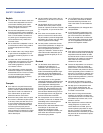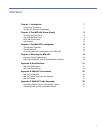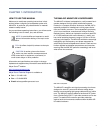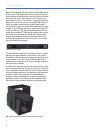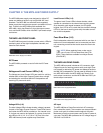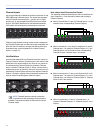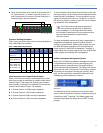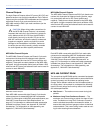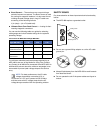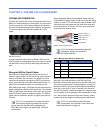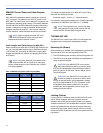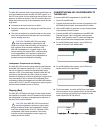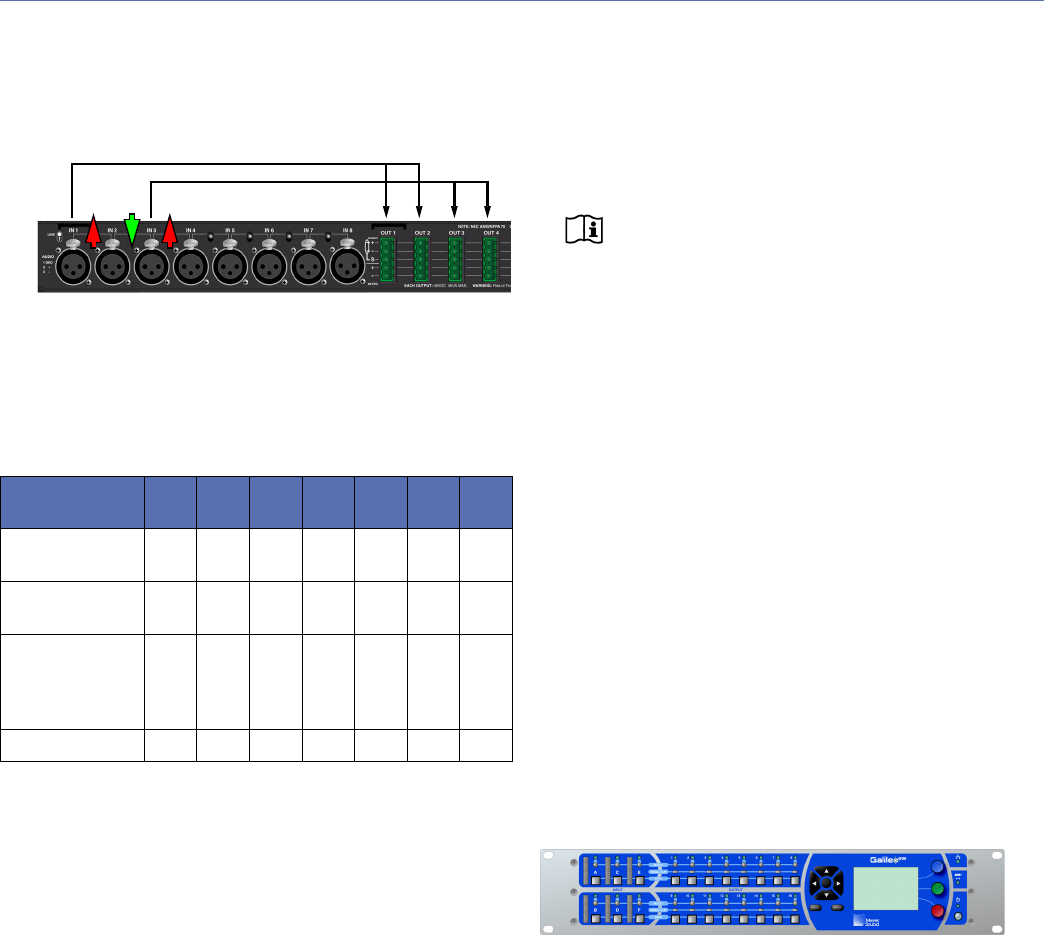
MM-4XP OPERATING INSTRUCTIONS
11
■ When Link switches 1 and 3 are on and Link switch 2 is
off, Channel Input 1 is routed to Channel Outputs 1–2,
and Channel Input 3 is routed to Channel Outputs 3–4.
Channel Inputs 2 and 4 are inactive.
Common Routing Examples
Table 1 lists some of the more common routing applications
for the MPS-488 Link switches.
Input Impedance for Linked Channel Inputs
When a Link switch is enabled, the Channel Input’s unbuf-
fered source signal is transmitted in parallel to each linked
Channel Output. This causes the Channel Input’s imped-
ance (normally 10 kOhms for one MM-4XP) to be reduced
for each linked Channel Output. For example:
■ 1 Channel Output, 10 kOhm input impedance
■ 2 Channel Outputs, 5 kOhm input impedance
■ 4 Channel Outputs, 2500 ohms input impedance
■ 8 Channel Outputs, 1250 ohms input impedance
To avoid distortion when linking Channel Inputs, make sure
the source device can drive the total load impedance of the
linked MM-4XP loudspeakers. The source device must be
capable of delivering a minimum of 16 dBV (6.3 V rms into
600 ohms) to yield the maximum peak SPL over the operat-
ing bandwidth of the loudspeaker.
NOTE: Most source devices are capable of
driving loads no smaller than 10 times their
output impedance. To drive eight MM-4XPs linked
from a single Channel Input, the source device should
have an output impedance of approximately
100 ohms or less.
For large loudspeaker systems with many loudspeakers, a
loudspeaker management system like Meyer Sound’s
Galileo
®
is recommended. Galileo audio outputs can drive
two MPS-488 power supplies with all Channel Outputs
linked (a total of 16 MM-4XP loudspeakers). Therefore, a
single Galileo with 16 audio outputs can drive 32 MPS-488
power supplies and 256 MM-4XP loudspeakers.
Galileo Loudspeaker Management System
Meyer Sound’s Galileo loudspeaker management system is
a comprehensive solution for driving and aligning loud-
speaker systems, especially those comprised of Meyer
Sound self-powered loudspeakers. The Galileo 616 is a two-
space rack unit with six inputs and 16 low-latency outputs.
Processing for the outputs includes gain, polarity, delay,
high- and low-pass filters, equalization (parametric and
TruShaping), and atmospheric correction.
The Galileo 616 can be controlled from its intuitive front
panel or from the extensive Compass™ software running on
a Windows or Mac
®
computer. The Galileo system also
interfaces seamlessly with Meyer Sound’s SIM
®
3 audio
analyzer.
Table 1: MPS-488 Routing Examples
Routing
Application
Link
1
Link
2
Link
3
Link
4
Link
5
Link
6
Link
7
INs 1–8 to
OUTs 1–8
Off Off Off Off Off Off Off
IN 1 to OUTs 1–4,
IN 5 to OUTs 5–8
On On On Off On On On
IN 1 to OUTs 1–2,
IN 3 to OUTs 3–4,
IN 5 to OUTs 5–6,
IN 7 to OUTs 7–8
On Off On Off On Off On
IN 1 to OUTs 1–8OnOnOnOnOnOnOn
1 2 3 4 1133
XXXX
Galileo 616



